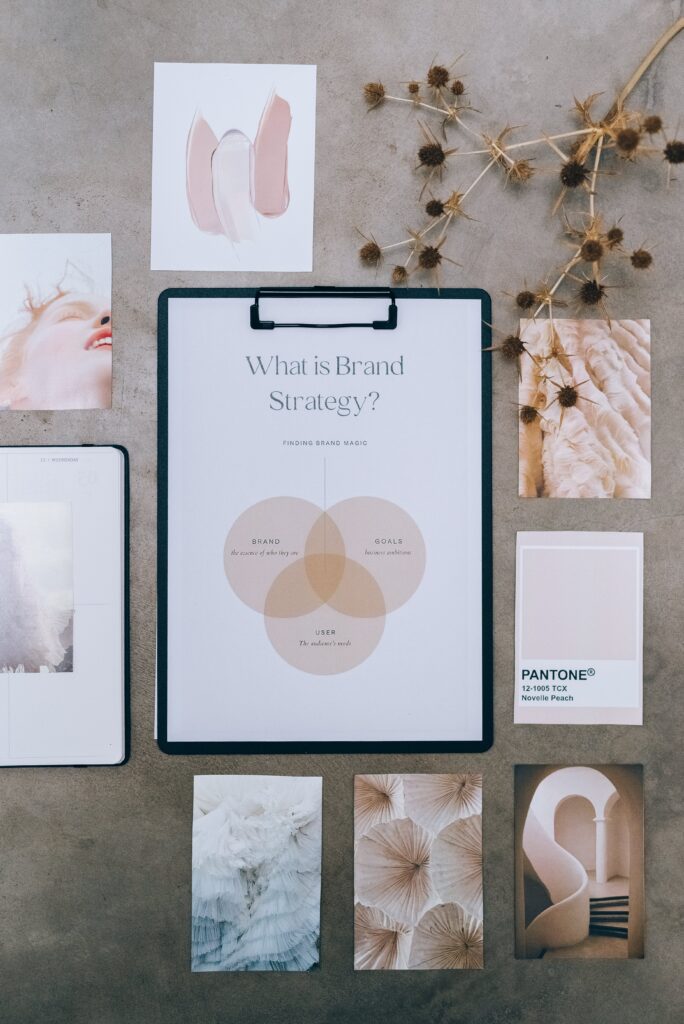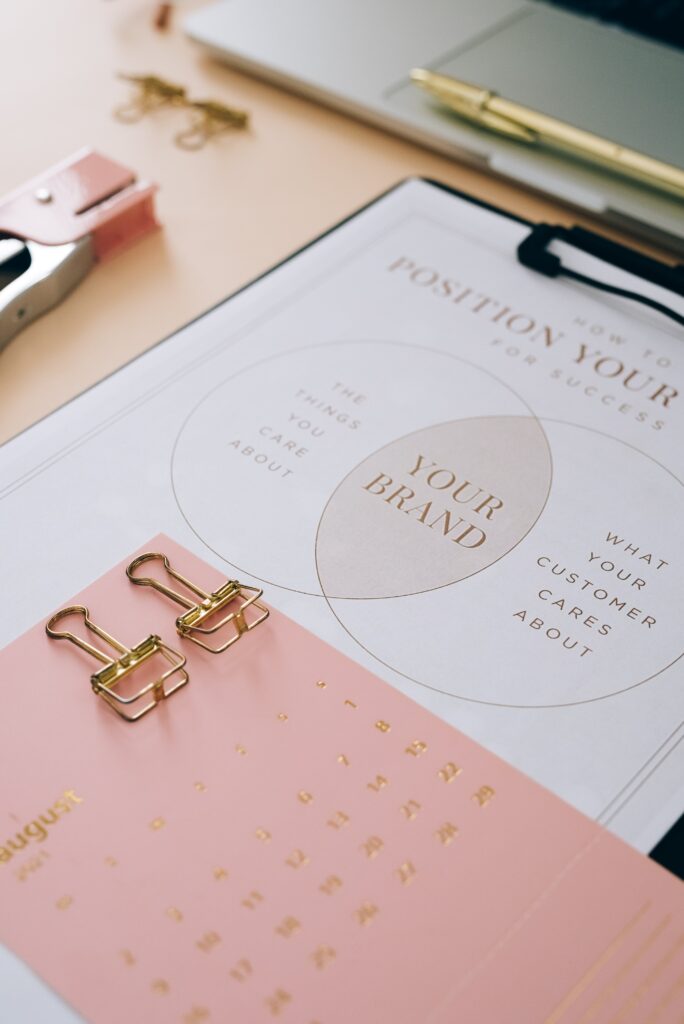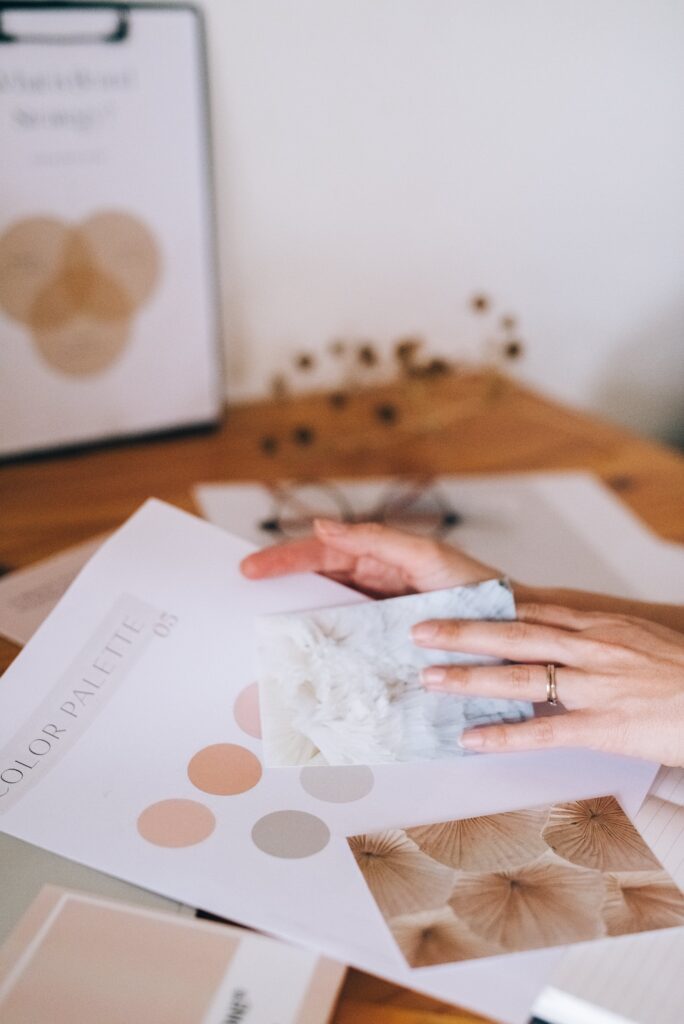Being an independent filmmaker–or an artist of any kind–is a lot of work. It always feels like there are a million things to do and it’s easy to feel overwhelmed, or like you’re falling behind. Talking about branding for artists might feel like I’m adding yet another thing to your plate, but I’m here to promise you that I want to make this as quick and as easy for you as possible. There’s another side to branding and marketing that we need to touch on; some people feel like building a brand or an online presence isn’t authentically you, or maybe it’s limiting, or maybe it’s deceptive in some ways. You’re an artist, you don’t want to feel like you’re selling something. I totally get that. But I feel confident that we can find a way to make branding for artists feel authentic as well as easy. Let’s dive in!

What is branding?
Before we get started, let’s define specifically what I mean when I say “branding for artists.” Before you think about your own brand, I want you to think about a brand you love. What makes you love it? What keeps you coming back to that brand, time and time again? For me, I love my favorite brands because of the way they make me feel. I enjoy using their products, of course. That’s a given. But a great product doesn’t equal a great brand. When I love a brand, I like what that brand stands for; maybe they’re women owned, or maybe they give to charity. I like what their products says about me as a consumer; maybe that I buy local, or that I prioritize my health, or honestly, maybe that I’m a cool person (as if!) I even like things like their packaging, their aesthetic, their general vibe. Maybe this is because I’m a brand manager and I’m a total geek about branding, but I promise pretty much everyone responds to good branding, even if they aren’t totally aware of it.
Branding stretches so far beyond the product you’ve created; it’s the story of you or your company. It’s the people, places, pieces of inspiration that make up who your product represents. It’s not only what you do, it’s how you do it. Of course, branding has a lot to do with things like colors, logos, graphic design, and social media posts, but that’s not the big picture. At its core, your brand is a story, and your branding is how you choose to tell that story.
What story are you trying to tell?
To get started with branding for artists, you need to take inventory of your story, your company’s story, and the story you want to tell as a creator.
Let’s look at New 32’s story as an example. First, what do we make? Well, we’re an independent film company. We make horror movies, but we make other things too, like comedies, and educational products. So those are our products, as gross as it can feel to call art you’ve poured everything into a “product.” But I digress. So what’s the story of our brand? Well, we were founded by four best friends, and we prioritize fun and play throughout our company. So that’s one aspect of our brand: fun and friendship. Our founders wanted to try to form an indie film production company that prioritized paying artists well and creating better on-set conditions for workers. So there’s another element of the brand: ethical independent filmmaking. And, of course, we pride ourselves on making really high production-value, well-made indie films, regardless of genre. There’s another big piece: big, amazing films on an indie movie budget. There are other pieces of our story, of course. We are woman owned. We focus on getting marginalized folks a place on our sets. We want to tell stories about a lot of types of people, people who maybe don’t always get to tell their stories. We’re proud southerners, based in the thriving arts community of North Carolina.
I understand it can feel cynical to take stock of things in this way, but think about it like this: creating your brand’s story means taking stock of what makes you you and then deciding what about you and your work you want to share with the world. Not every part of your story is for public consumption, but when you’re working on branding, you’re thinking about what aspects of yourself you do want to share. Branding isn’t just about getting customers or viewers for your movie. Branding is also about setting boundaries around what type of content, marketing, and art you share with the world. So really think about it. What story do you want to tell?

Make a list of adjectives.
Before I talk more about branding for artists, I want to shout out a book I really loved. Obsessed: Building a Brand People Love from Day One by Emily Heyward was incredibly eye-opening and it taught me a totally new way to think about branding. So, if this is an area of interest for you, check out this book! It’s a quick, fun read, and you’ll learn a lot, I promise.
Anyways, back to our regular programming. The next step in developing your brand is by listing out the adjectives you want people to associate with your brand. Here’s an example, again from New 32:
- Fun
- Friendly
- Accessible
- Ethical
- Professional
- High-quality
It’s okay (and maybe even desirable) to have some contradictions in your list. A brand can be fun and professional at the same time. It can be friendly and high-quality. So don’t stress the contradictions, and instead just get really clear on how you want your brand to make people feel.
Work on the design.
This, at least for me, is a really fun part. This is where you think about how you communicate your story to the people who you want to engage with your brand. I already know you’re an artist, so even if you’re not a graphic designer I know you’re going to have a cool vision for this.
Things to think about:
- Colors
- Fonts
- Logos
- Branded photographs
If you’re a horror creator, maybe you want to think about darker colors for your branding. If you want to communicate a fun, feminine energy, maybe you’ll think about a cool scripted font for your logo. If you’re really into sci-fi, could you grab a friend and do a branded photoshoot that looks like you’re on Mars? Get creative here, and think about this as an art project. How is the design of your brand going to communicate your story?
Services like Canva have a place where you can pull all your branding together; you can input fonts, colors, logos, and images that you know you’ll be using time and time again. Setting up your branding up front is a way to do your future self a favor. Building a website on a service like WordPress or Wix helps people find your work, and once they’re set up it doesn’t take much to maintain. Creating your brand kit on Canva will save your life if you ever have to throw together a flier for a crowdfunding campaign or make a quick Instagram post to announce your festival run. You can even take the time to create templates for your social media, so you can always create a graphic quickly and without stress. Again, I don’t expect you to be a graphic designer–that’s a specific skillset that people work very hard to obtain, through formal education, job training, or hundreds of hours of self-teaching. Don’t put that kind of pressure on yourself. It’s more than okay to utilize things like pre-made templates on Canva, and then just switch them to your brand colors and fonts. Make this easy on your future self. Branding for artists doesn’t have to feel like a chore if you set yourself up for success.

Think about your online presence.
This can be as simple as setting up a Twitter account to promote your festival run if that’s all you have the capacity for. If you’re a visual artist or want to sell products of some kind, you might want to consider setting up shop on Etsy, Amazon, Shopify, or another online sales platform that makes sense for you. If you’re a filmmaker, maybe you want to get into creating content for Youtube. Maybe Instagram is more your style. Perhaps all you need is a website that you set and forget, or maybe you want to run a blog and share your knowledge with the world. There are really no wrong answers here; just think about how you want to show up in the world, how you want to connect with people, and what you have the capacity for. Remember that if you try something and hate it, it’s always okay to pivot or rethink your plan. I could write a whole post on social media and establishing an online presence for artists (let me know if you want that) so I’ll just keep it simple for now. Don’t over commit, don’t pour yourself into social media marketing if that’s not your vibe; you’re an artist, not a social media manager (unless you’re both, which is very cool) and there’s nothing wrong with that. Having some sort of online presence is a really good idea if you want to share your work with a wide audience and maybe make some money doing it, but that doesn’t mean you have to be on all the platforms all the time. Be thoughtful!
And there you have it.
Of course, branding for artists is a pretty complicated thing, but we have established the basics pretty well here. Get clear on what specifically you want your brand to be, create a roadmap for yourself, don’t over exert yourself trying to market, and the rest should be easy… or maybe even fun, if you’re a nerd like me. Do you have other questions about branding? Hit me up and I’m happy to chat more! You can also read the post I did a few months back about how to market your indie film.

Leave a Reply